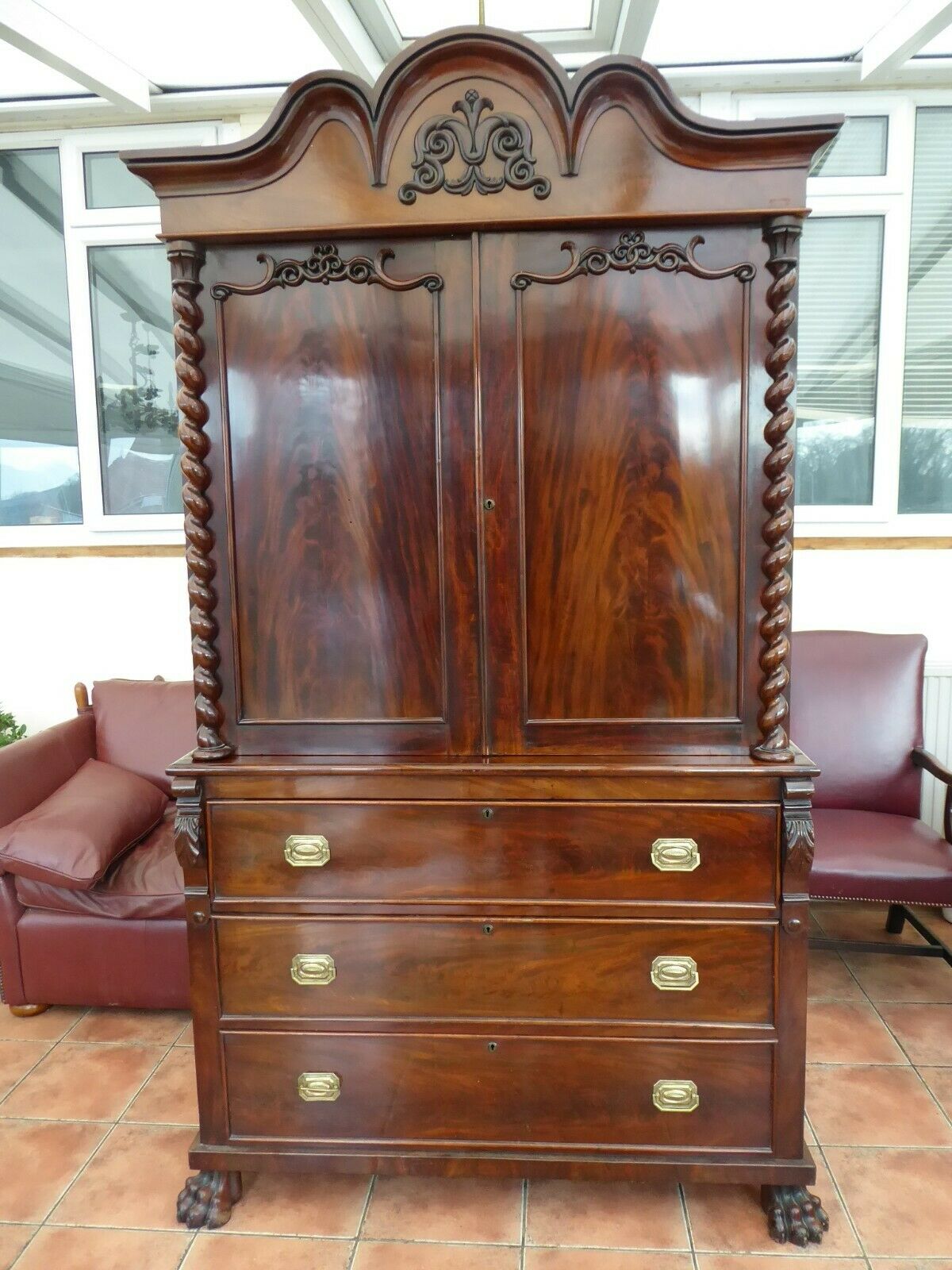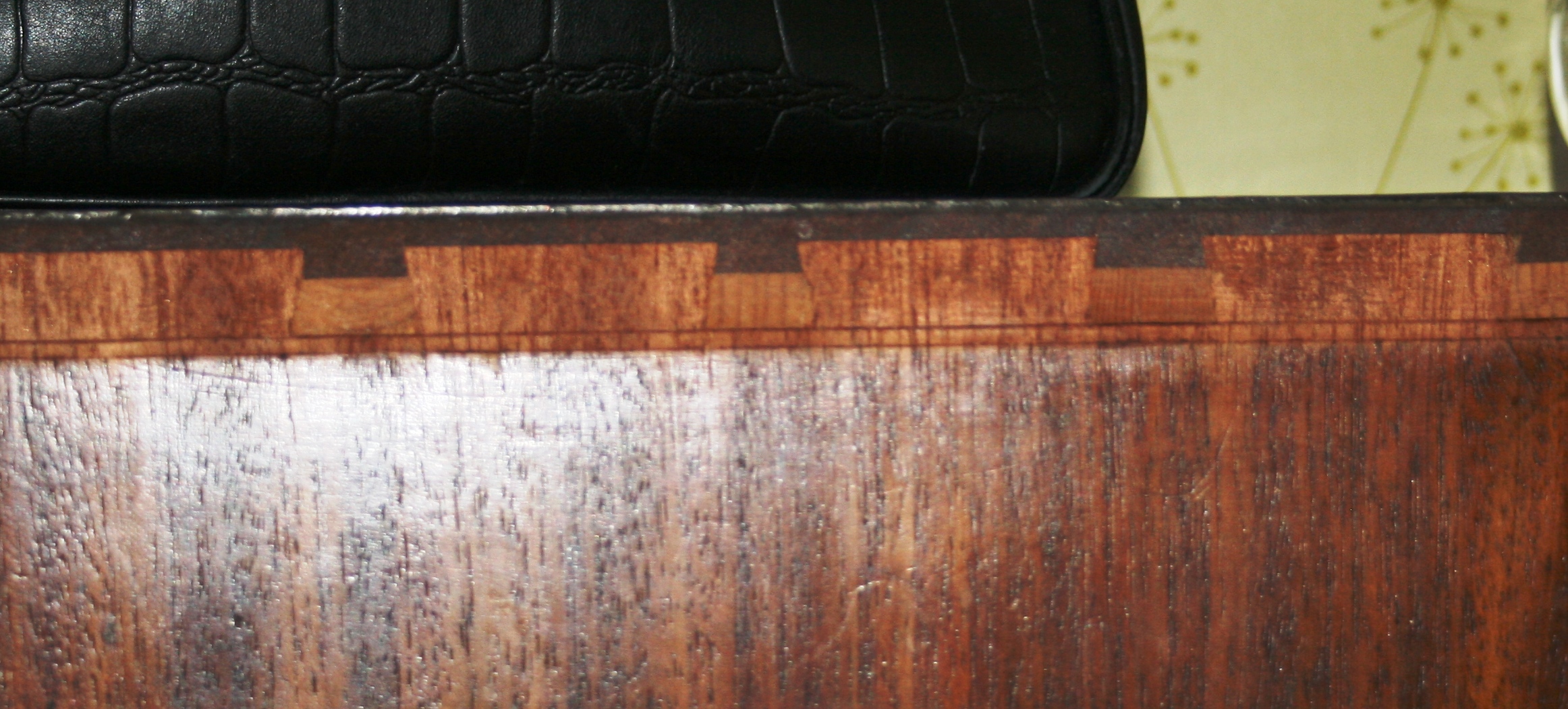AJB Temple
Finely figured

This is what I got for my £200. The drawers, slips and cupboard fronts and sides appear to be solid mahogany veneered with flame mahogany and French polished. The top and bottom carcasses are held together with dovetails, as are the drawers. Nicely made and tight. You can see the marking lines etc still.
The drawer and slip sides are nice quality oak, about 3/8” thick, and the drawer and slip bottoms are also oak (two piece), nailed on with forged iron nails. Quadrant reinforcements on the drawer bottoms look later to me. Handles appear original – there are no other holes in the drawers, and no depression marks. Hinges are brass but all screws are steel and look original. There are no keys to the locks and I've not taken them off yet to look. Everything else that is not visible looks like it is probably made of softwood that was cut very roughly. This has some old worm holes.
Not quite sure what to do with it. We might actually use it for storing linen. Anyone who has insights into these old cupboards, I would be interested to hear.








































